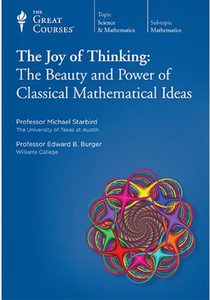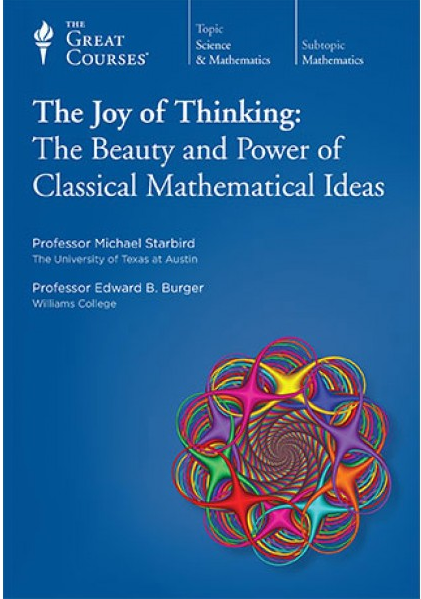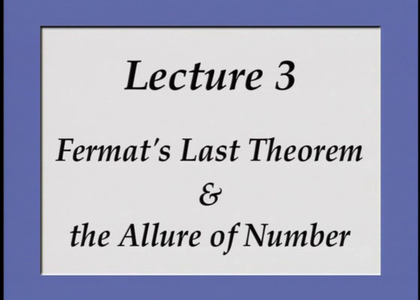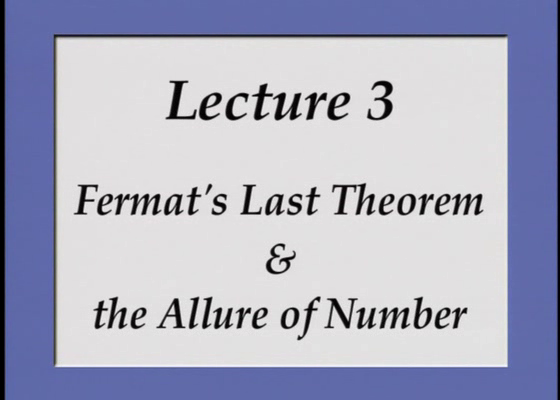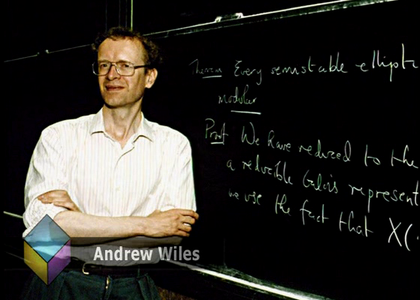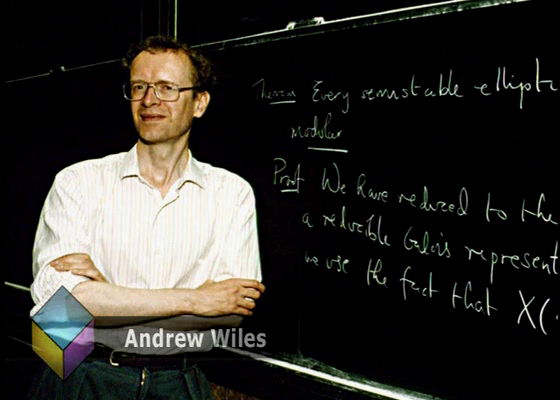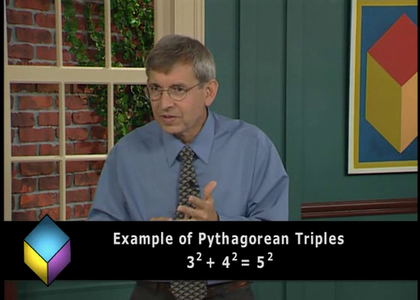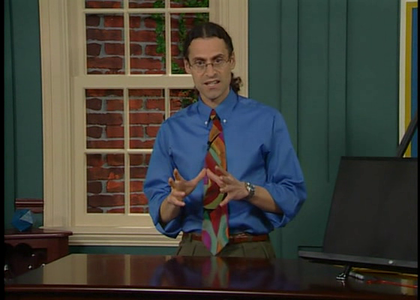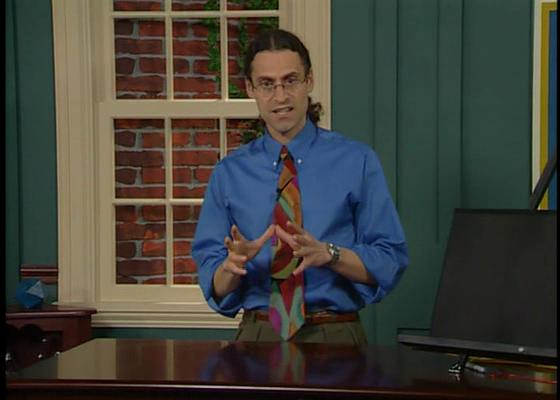TTC Video - Joy of Thinking: The Beauty and Power of Classical Mathematical Ideas
24xWEBRip | English | AVI | 540 x 400 | XviD ~1463 kbps | 29.970 fps
MP3 | 128 kbps | 48.0 KHz | 2 channels | 12:24:21 | 8.2 GB
MP3 | 128 kbps | 48.0 KHz | 2 channels | 12:24:21 | 8.2 GB
Genre: eLearning / Science, Maths
Discover mathematics as an artistic and creative realm that contains some of the greatest ideas of human history. This course explores infinity, the fourth dimension, probability, chaos, fractals, and other fantastic themes.Is it worth Bill Gates's time to pick up a $100 bill if he sees it on the sidewalk? Amidst the frenzied screaming from the audience on television's Let's Make a Deal, is there sound advice to give the contestant trying to decide whether to swi
The world of mathematics contains some of the greatest ideas of humankind—ideas comparable to the works of Shakespeare, Plato, and Michelangelo. These mathematical ideas can add texture, beauty, and wonder to your life. Most importantly, you don't have to be a mathematician to have access to this world.
A Mathematical Journey
The Joy of Thinking is a course about fun, aesthetics, and mystery—about great mathematical ideas that arise from puzzles, observations of everyday life, and habits of curiosity and effective thinking. It is as much about learning to think abstractly as it is about what we traditionally think of as mathematics.
You explore the fourth dimension, coincidences, fractals, the allure of number, and geometry, and bring these weighty notions back down to earth to see how they apply to your own life.
Rather than focusing on adding figures or creating equations (in fact, there are fewer numbers than you might expect), this course enables you to uncover and grasp insightful strategies for approaching, enjoying, and understanding the world around you.
"Wonderful … the Best"
Taught by Professors Edward B. Burger of Williams College and Michael Starbird of the University of Texas at Austin, this course is based on their innovative textbook, The Heart of Mathematics: An invitation to effective thinking, which a reviewer for The American Mathematical Monthly called "wonderful … possibly the best 'mathematics for the non-mathematician' book that I have seen."
Paradoxical Phenomena
Consider these examples:
The game show Let's Make a Deal® entertained viewers with Monty Hall urging contestants to pick a door. The choice involves a question of chance that has been the source of many heated arguments. You explore the mathematics that prepares you for future game-show stardom and explains a paradoxical example of probability.
Coincidences are striking because any particular one is extremely improbable. However, what is even more improbable is that no coincidence will occur. You see that finding two people having the same birthday in a room of 45 is extremely likely, by chance alone, even though the probability that any particular two people will have the same birthday is extremely low.
One of the most famous illustrations of randomness is the scenario of monkeys randomly typing Hamlet. Another, called "Buffon's needle," shows how random behavior can be used to estimate numbers such as pi. Physicists discovered that a similar needle-dropping model accurately predicts certain atomic phenomena.
The Fourth Dimension
Mathematical thinking leads not only to insights about our everyday lives and everyday world but also points us to worlds far beyond our own. Take the fourth dimension. The very phrase conjures up notions of science fiction or the supernatural.
Because the fourth dimension lies beyond our daily experience, visualizing, exploring, and understanding it requires us to develop an intuition about a world that we cannot see. Nevertheless, that understanding is within our reach.
You learn how to construct a four-dimensional cube and why a four-dimensional surgeon could remove your appendix without making an incision in your skin.
Fractals
Or take a world that we can see: the two-dimensional realm. It can be just as rich with surprises. You learn how the simple exercise of repeatedly folding a sheet of paper introduces the concept of fractals—a geometric pattern that is infinitely complex—repeated at ever smaller scales to produce irregular shapes and surfaces that cannot be represented by classical geometry.
You discover that the paper-folding sequence offers an example of the classical computational theory of "automata," developed by Alan Turing—the father of modern computing. Fractal construction processes may also relate to the behavior of the stock market and even to your heart rate.
Life Lessons
As Professors Burger and Starbird lead you through these and other examples, you pick up some valuable life lessons:
Just do it. If you're faced with a problem and you don't know how to solve it, begin by taking some action.
Make mistakes and fail but never give up. Mathematicians are supremely gifted at making mistakes. The key is to use the insight from your mistakes to identify the features of a correct solution to your problem.
Keep an open mind. If we are never willing to consider new ideas, then we can never hope to increase our understanding of the world around us.
Explore the consequences of new ideas. This strategy pushes us to see where an idea leads and in this way to discover new ideas and insights.
Seek the essential. One of the biggest obstacles in solving real-world problems is the noise and clutter of irrelevant issues that surround them.
Understand the issue. Identifying and clarifying the problem to be solved in a situation is often a significant step in reaching a solution.
Understand simple things deeply. We can never understand unknown situations without an intense focus on those aspects of the unknown that are familiar. The familiar, in other words, serves as the best guide to the unfamiliar.
Break a difficult problem into easier ones. This strategy is fundamental to mathematics and, indeed, applicable in everyday life.
Examine issues from several points of view. We can, for example, gain new insights by looking at the construction of an object, rather than the object itself.
Look for patterns. Similarities among situations and objects that are different on the surface should be viewed as flashing lights urging us to look for explanations. Patterns help us to structure our understanding of the world, and similarities are what we use to bring order and meaning to chaos.
The Un-Math Math
This is probably not like the mathematics you had at school. Some people might not even want to call it math, but you experience a way of thinking that opens doors, opens minds, and leaves you smiling while pondering some of the greatest concepts ever conceived.
One of the great features about mathematics is that it has an endless frontier. The farther you travel, the more you see over the emerging horizon. The more you discover, the more you understand what you've already seen, and the more you see ahead. Deep ideas truly are within the reach of us all. How many more ideas are there for you to explore and enjoy? Well, how long is your life?
tch his choice to Door Number 2? How can we see the fourth dimension in a Salvador Dali painting?
These certainly aren't the kinds of questions you would normally ask in typical lectures about mathematics. But then again, this isn't an ordinary math course.
Lectures:
1. Great Ideas that Bring Our World into Focus
2. How Many? Counting Surprises
3. Fermat’s Last Theorem and the Allure of Number
4. Pining for Nature’s Numbers
5. Sizing up the Fibonacci Numbers
6. The Sexiest Rectangle
7. The Hidden Beauty of the Golden Rectangle
8. The Pythagorean Theorem and Geometry of Ellipses
9. Not-so-Platonic Relationships in the Platonic Solids
10. Hunting for a Sixth Platonic Solid
11. Is There a Fourth Dimension? Can We See It?
12. The Invisible Art of the Fourth Dimension
13. A Twisted Idea—The Möbius Band
14. A One-Sided, Sealed Surface—The Klein Bottle
15. Ordinary Origami—Creating Beautiful Patterns
16. Unfolding Paper to Reveal a Fiery Fractal
17. Fractals—Infinitely Complex Creations
18. Fractal Frauds of Nature
19. Chance Surprises—Measuring Uncertainty
20. Door Number Two or Door Number Three?
21. Great Expectations—Weighing the Uncertain Future
22. Random Thoughts—Randomness in Our World
23. How Surprising are Surprising Coincidences?
24. Life Lessons Learned from Mathematical Thinking
also You can find my other interesting Maths-posts
(if old file-links don't show activity, try copy-paste them to the address bar)
General
Complete name : Math.lecture-06.avi
Format : AVI
Format/Info : Audio Video Interleave
File size : 350 MiB
Duration : 30 min 31 s
Overall bit rate : 1 603 kb/s
Video
ID : 0
Format : MPEG-4 Visual
Format profile : Advanced Simple@L5
Format settings : BVOP1
Format settings, BVOP : 1
Format settings, QPel : No
Format settings, GMC : No warppoints
Format settings, Matrix : Default (H.263)
Muxing mode : Packed bitstream
Codec ID : XVID
Codec ID/Hint : XviD
Duration : 30 min 31 s
Bit rate : 1 463 kb/s
Width : 560 pixels
Height : 400 pixels
Display aspect ratio : 1.400
Frame rate : 29.970 (30000/1001) FPS
Color space : YUV
Chroma subsampling : 4:2:0
Bit depth : 8 bits
Scan type : Progressive
Compression mode : Lossy
Bits/(Pixel*Frame) : 0.218
Stream size : 319 MiB (91%)
Writing library : XviD 1.1.0 (UTC 2005-11-22)
Audio
ID : 1
Format : MPEG Audio
Format version : Version 1
Format profile : Layer 3
Format settings : Joint stereo / MS Stereo
Codec ID : 55
Codec ID/Hint : MP3
Duration : 30 min 31 s
Bit rate mode : Constant
Bit rate : 128 kb/s
Channel(s) : 2 channels
Sampling rate : 48.0 kHz
Frame rate : 41.667 FPS (1152 SPF)
Compression mode : Lossy
Stream size : 28.0 MiB (8%)
Alignment : Aligned on interleaves
Interleave, duration : 33 ms (1.00 video frame)
Interleave, preload duration : 504 ms
Writing library : LAME3.97b
Encoding settings : -m j -V 4 -q 2 -lowpass 17 -b 128
Complete name : Math.lecture-06.avi
Format : AVI
Format/Info : Audio Video Interleave
File size : 350 MiB
Duration : 30 min 31 s
Overall bit rate : 1 603 kb/s
Video
ID : 0
Format : MPEG-4 Visual
Format profile : Advanced Simple@L5
Format settings : BVOP1
Format settings, BVOP : 1
Format settings, QPel : No
Format settings, GMC : No warppoints
Format settings, Matrix : Default (H.263)
Muxing mode : Packed bitstream
Codec ID : XVID
Codec ID/Hint : XviD
Duration : 30 min 31 s
Bit rate : 1 463 kb/s
Width : 560 pixels
Height : 400 pixels
Display aspect ratio : 1.400
Frame rate : 29.970 (30000/1001) FPS
Color space : YUV
Chroma subsampling : 4:2:0
Bit depth : 8 bits
Scan type : Progressive
Compression mode : Lossy
Bits/(Pixel*Frame) : 0.218
Stream size : 319 MiB (91%)
Writing library : XviD 1.1.0 (UTC 2005-11-22)
Audio
ID : 1
Format : MPEG Audio
Format version : Version 1
Format profile : Layer 3
Format settings : Joint stereo / MS Stereo
Codec ID : 55
Codec ID/Hint : MP3
Duration : 30 min 31 s
Bit rate mode : Constant
Bit rate : 128 kb/s
Channel(s) : 2 channels
Sampling rate : 48.0 kHz
Frame rate : 41.667 FPS (1152 SPF)
Compression mode : Lossy
Stream size : 28.0 MiB (8%)
Alignment : Aligned on interleaves
Interleave, duration : 33 ms (1.00 video frame)
Interleave, preload duration : 504 ms
Writing library : LAME3.97b
Encoding settings : -m j -V 4 -q 2 -lowpass 17 -b 128
ScreenShots
✅ Exclusive eLearning Videos ParRus-blog ← add to bookmarks
Feel free to contact me PM
when links are dead or want any repost
Feel free to contact me PM
when links are dead or want any repost


